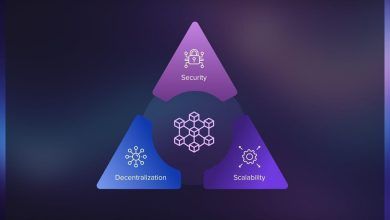
What Are the Strengths and Weaknesses of QR
In today’s world, QR codes have become an integral part of our daily lives. These small square barcodes, consisting of black and white squares, can be found on almost everything, including advertisements, product packaging, menus, and business cards. QR codes are a type of matrix barcode that smartphones and other devices can scan with a built-in camera. Once scanned, a QR code can link the user to a website, app, or other digital content.
One of the key strengths of QR codes is their versatility. They can be easily generated with a QR code generator and can be used for a variety of purposes, such as marketing, payments, and inventory management. However, one of the weaknesses of QR codes is their dependence on technology. They cannot be scanned without a smartphone or other device with a camera and QR code reader.
What is a QR Code?
QR stands for “quick response.” QR codes are a type of matrix barcode that can be read easily by smartphones and dedicated QR code readers. They were originally invented in 1994 by a Japanese company, Denso Wave, to track vehicle parts in manufacturing plants. However, in recent years, QR codes have become popular outside of the automotive industry to convey information quickly and conveniently to consumers.
A QR code comprises black and white square dots arranged in a grid pattern. The information encoded can be text, links, phone numbers, emails, SMS messages, contact details, or any digital data. QR codes can store up to 4,296 alphanumeric characters. When scanned by a smartphone camera, the QR code reader software on the device translates the code into something meaningful to the user.
Key Strengths of QR Codes
Convenience
QR code provides a quick and easy way for smartphone users to access additional information. Rather than manually typing in a long URL or contact details, the user can simply scan the QR code to pull up the website or create a new contact instantly. This makes QR codes ideal for situations where conveying information needs to be quick and hassle-free.
Versatility
QR codes are incredibly versatile in the types of data they can hold. Pretty much any digital information can be encoded into a QR code, whether it’s text, URLs, PDF files, contact info, WiFi login details or phone numbers. QR codes can even contain executable programs. This versatility allows businesses to get creative with how they use QR codes.
Trackability
Unlike regular barcodes, QR codes can store analytics data that allows the creator to track usage and scans. You can see how often your QR code was scanned, from what location, which device, and so on. This gives you valuable data and insight into engagement levels and the effectiveness of your QR code campaigns.
Lossless data transfer
QR codes have built-in error correction that makes them highly robust to damage. Up to 30% of a QR code can become dirty or damaged without any data loss when scanned. The code will still scan correctly. This reliability ensures seamlessness in conveying information to users.
Security
While anyone can generate and read a QR code, they can also be encrypted for added security and protection of sensitive data. Users can add passwords to QR codes to restrict access. This makes QR codes suitable for confidential business use cases that require data security.
Key Weaknesses of QR Codes
Limited scan area
For QR codes to scan properly, the full code must be visible within the frame of the smartphone camera. This can impose some limits on the dimensions and placement of QR codes on certain materials and objects. The scan area needs to be big enough but not too big for smartphone cameras to capture easily.
Reliance on internet connection
Since QR codes often link to digital content online, an internet connection is usually required on the user’s smartphone to retrieve the full information. The exception is when QR codes contain stored data, such as contact details. But for URLs, users need to have a web connection.
Security vulnerabilities
Unprotected QR codes pose security issues even though encryption and passwords can be applied. Hackers can modify public QR codes to redirect users to malicious sites to steal data or install malware. Educating users only to scan trusted QR codes can help mitigate this risk.
Perception as spam
Due to intrusive overuse by some brands, consumers can have a negative perception of QR codes as simply advertising spam. Making the usefulness and value of QR codes very clear is essential to prevent their ignorance. Thoughtful design and placement are important to maintain user trust.
Lack of universal adoption
Despite surging popularity, QR code reading has not become a universal smartphone capability. Some demographic groups, like the elderly who don’t use smartphones regularly, will not be able to engage with QR codes readily. So, they cannot completely replace other communication methods.
Use Cases and Examples
Business cards and brochures
QR codes on business cards or brochures allow users to quickly save contact details to their phone or view a company website for more details.
Product packaging and labels
Brands can print QR codes on product packaging or price labels so users can scan to view additional product information, track supply chains, or verify authenticity.
Advertising and magazines
QR codes in ads, billboards, and magazines provide a direct link for consumers to visit a brand’s site, and social profiles, or make a purchase.
Restaurants and retail
QR codes on restaurant menus and retail stores give customers quick access to content like nutritional information, product details, coupons, or loyalty programs.
Events and trade shows
Event organizers can create custom QR codes to provide information on schedules, speakers, exhibits, and layout maps.
Education and workbook
Teachers can generate QR codes for interactive worksheets and textbooks so students can view multimedia content and digital learning resources.
WiFi login and passwords
Venues can enable quick WiFi access by displaying a QR code that users can scan to automatically connect to the network without typing a password.
Payments and Finance
When linked to fintech and payment apps, QR codes support payment services and digital transactions. Users can easily pay bills by scanning a customized QR code.
FAQs
What are the different types of QR codes?
There are different types based on capabilities:
- Static: Fixed code that doesn’t change
- Dynamic: Editable code with changeable data
- Branded: Includes visual brand elements
- vCard: Stores contact information
How are QR codes scanned and read?
Smartphone cameras and QR reader apps can scan QR codes. Alternatively, dedicated QR scanners can also scan the codes. The software then decodes the captured code through the camera.
How are QR codes created?
QR codes can be generated through free online programs and paid software. Most QR builders allow customizing colors, logos, and error correction levels.
What data size can a QR code hold?
QR codes can hold up to 4,296 alphanumeric characters. The maximum data capacity depends on the QR code version and error correction level.
How secure are QR codes?
QR codes can be encrypted and password protected to make them more secure. However unencrypted public codes do carry a risk of redirection to unsafe sites by hackers.
Conclusion
QR codes offer an easy and efficient way for brands to engage digital consumers by removing friction in accessing content. When leveraged thoughtfully, QR codes allow for delivering valuable information contextually within the user journey. However, brands must be mindful of QR code placement and perception and educate users to scan safely. With smart and strategic usage, QR codes provide opportunities to drive engagement, transactions, and interactive experiences through the convenience of a smartphone scan.





